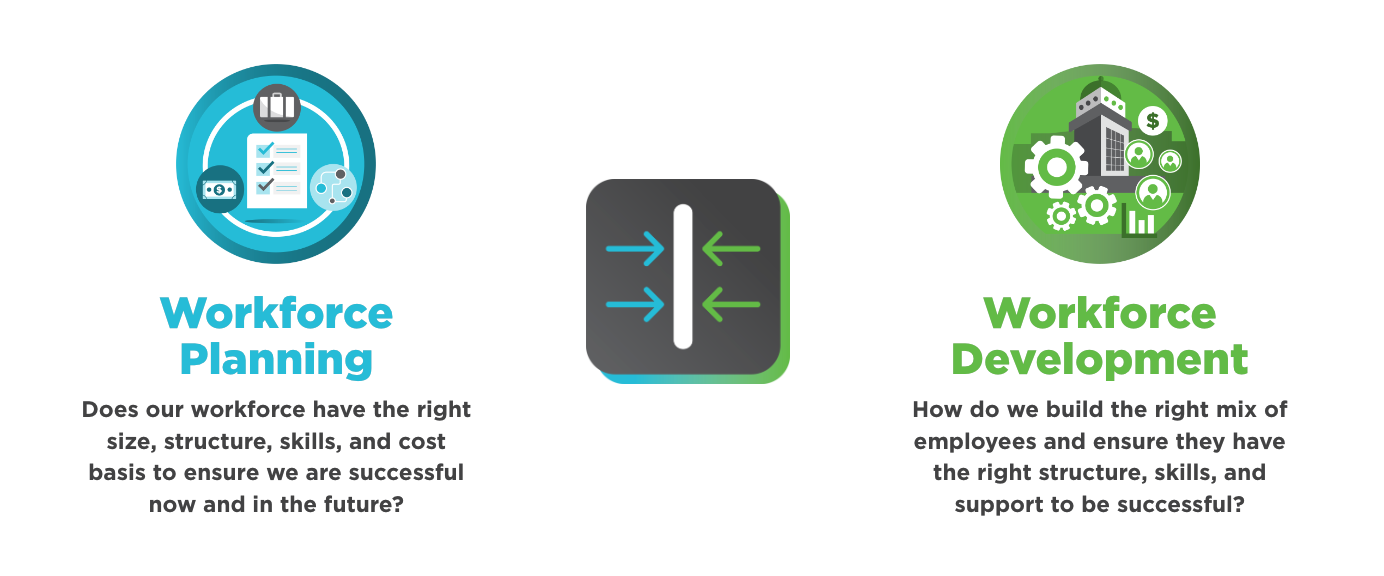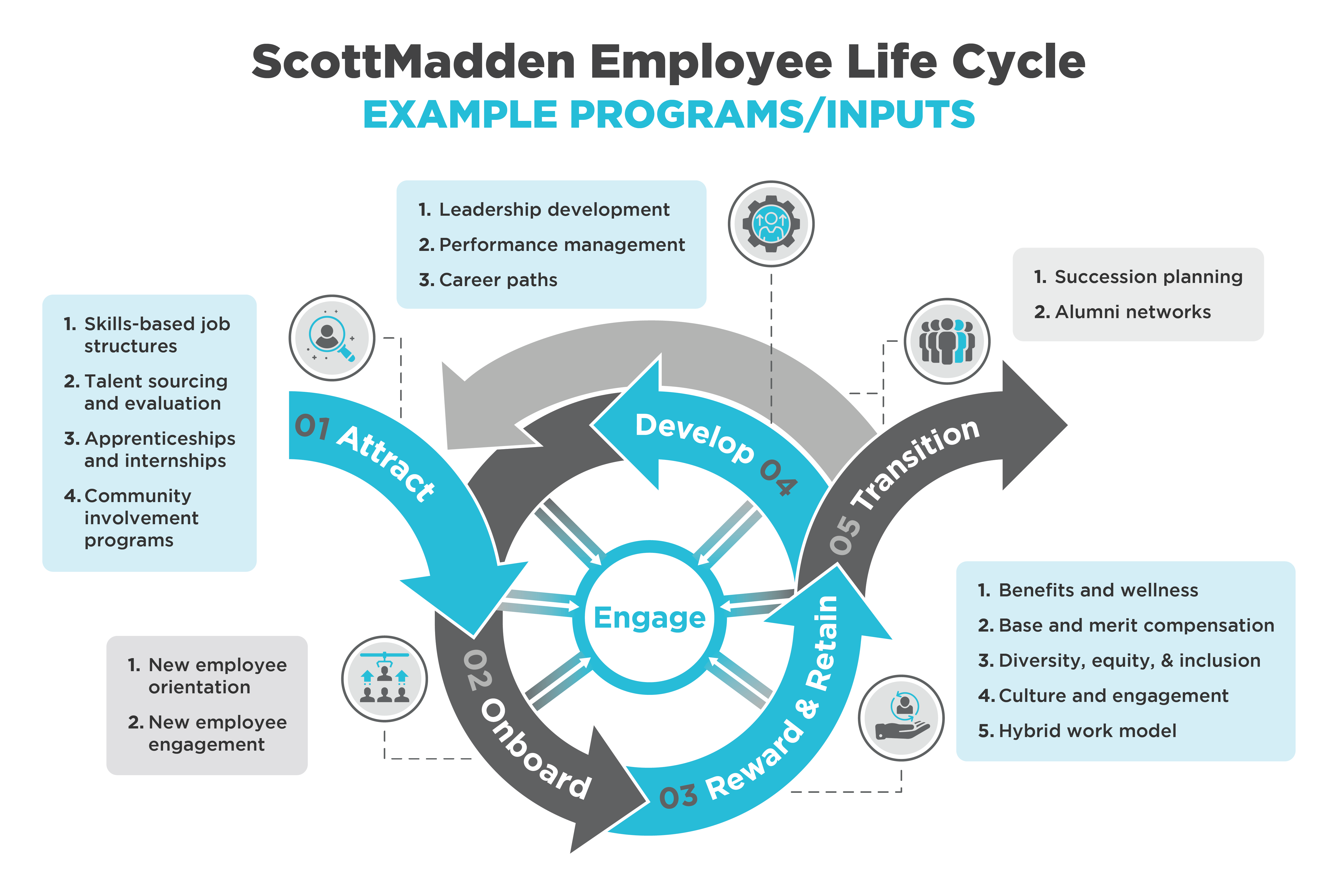Since 2006, the Center for Energy Workforce Development (CEWD) has conducted bi-annual surveys to explore trends in the energy workforce and support companies in the industry with strategic workforce planning initiatives. Previous survey cycles highlighted an aging workforce and the impacts of potential retirements as key concerns. However, when CEWD partnered with ScottMadden to conduct the 10th survey in 2023, results indicated the utility sector has largely replenished the aging workforce from a numbers perspective. While this concern has been alleviated, new challenges have emerged. Survey results showed that more than 50% of the current workforce in the utility sector has less than 10 years of experience. Furthermore, the survey seemed to show a new trend of much higher non-retirement attrition, indicating that employees are changing jobs more frequently than ever before.
- Align business strategies and talent programs
- Prioritize talent investments to maximize ROI
- Improve employee engagement and retention
- Develop leadership capabilities and allow for intentional workforce management
- Anticipate changes in workforce needs and prepare for future shifts in the marketplace
Integrating Workforce Planning and Development

As mentioned above, workforce development can take on many forms and definitions. When identifying, prioritizing, and connecting workforce development initiatives, ScottMadden recommends viewing them through the lens of the employee lifecycle. This approach ensures the employee experience remains front and center as the business and HR move through the workforce planning and development process.

Executing Workforce Planning and Development
A key challenge with integrated workforce planning and development is the overall governance of the end-to-end program. Executive leadership, business unit leadership, and HR all have roles to play throughout the process, and coordination is critical to ultimately align business strategies and talent programs. ScottMadden often sees a gap between the business and HR in terms of expectations, priorities, and processes. Ideally, HR provides guidance, processes, and tools that enable collaboration with business unit leaders to identify and solve workforce needs. Bridging the gap between the business and HR is often a necessary starting point on the workforce planning and development journey.
Once the organization has laid the collaborative foundation between the business and HR, there are three key steps to effectively executive strategic workforce planning and development:
- Understanding business strategies and impacts by gathering stakeholder input on current challenges and future needs, identifying internal and external factors that could impact these needs, and developing a future state strategy-driven workforce profile.
- Assessing resource quantity and skill requirements by leveraging a workforce planning model to forecast the required workforce size, identifying skill gaps based on a functional inventory of existing capabilities, and developing an “acquire vs. build” philosophy for critical resource gaps.
- Developing and prioritizing talent strategies based on impact and cost, establishing an implementation roadmap to close the identified gaps, developing success measures, and maintaining ongoing initiative review plans.
Implications and Takeaways
The energy industry is experiencing tremendous change, and organizations will need to evolve to meet this moment. Whether implementing new data capabilities to manage the proliferation of communicating SCADA devices at the grid edge, scaling up transmission resources to help interconnect more dispersed utility-scale renewable assets, or upskilling back-office and field functions to maximize the effectiveness of various IT/OT investments—effectively managing the utility workforce will be critical.
Organizations that have successfully implemented a comprehensive and integrated workforce planning and management process will be better positioned to respond to the evolving challenges in recruiting, retaining, and developing the right skills and talent for their businesses. Workforce planning and development is not a one-time process—it should be regularly revisited, particularly for the utility industry that is evolving more rapidly than ever with new workforce composition and skill requirements.



